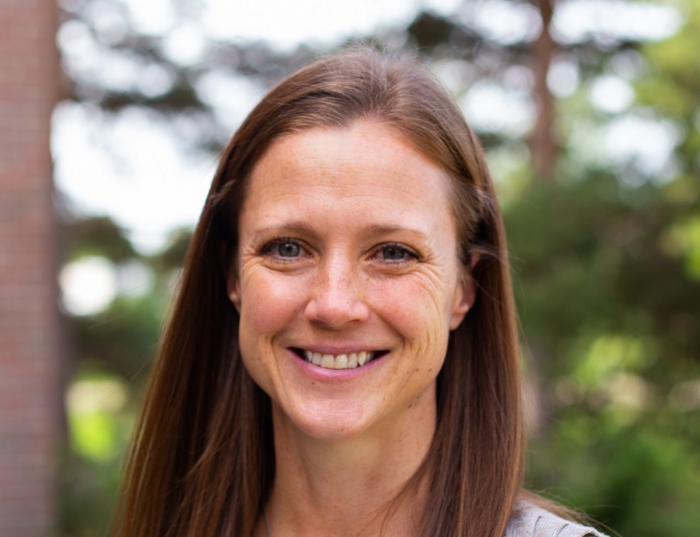FluencyBank English Purdue Corpus

|
Christine Weber
Speech, Language, and Hearing Sciences
Purdue University
christineweber@purdue.edu
website
|

|
Anne Smith
Speech, Language and Hearing Sciences
Purdue University
asmith@purdue.edu
|

|
Amanda Hampton Wray
Communication Sciences and Disorders
University of Pittsburgh
hamptonwray@pitt.edu
|

|
Bridget Walsh
Communication Sciences and Disorders
Michigan State University
walshb16@msu.edu
website
|

|
Evan Usler
Communication Sciences and Disorders
University of Delaware
eusler@udel.edu
website
|
| Participants: | 195 |
| Type of Study: | clinical |
| Location: | USA |
| Media type: | audio not available |
| DOI: | doi:10.21415/P2JB-CA45 |
Citation information
Users of this corpus should cite the following publication:
Smith, A., & Weber, C. (2016). Childhood Stuttering–Where are we and
Where are we going? Seminars in Speech and Language, 37, 4, 291-297).
Other publications relevant to this corpus include:
Walsh, B, Christ, S., & Weber, C. (2021 in press). Exploring
relationships among risk factors for persistence in early childhood
stuttering. Journal of Speech, Language, & Hearing Research
Usler, E., Smith, A., & Weber, C. (2017). A lag in speech motor
coordination during sentence production is associated with stuttering
persistence in young children. Journal of Speech, Language, and Hearing
Research, 60(1), 51-61.
Usler, E. R., & Walsh, B. (2018). The Effects of Syntactic Complexity
and Sentence Length on the Speech Motor Control of School-Age Children
Who Stutter. Journal of Speech, Language, and Hearing Research, 61(9),
2157-2167.
Walsh, B., Usler, E., Bostian, A., Mohan, R., Gerwin, K. L., Brown,
B., & Smith, A. (2018, September). What are predictors for
persistence in childhood stuttering? Seminars in Speech and Language,
39,4, 299-312.
Walsh, B., Bostian, A., Tichenor, S. E., Brown, B., & Weber, C.
(2020). Disfluency Characteristics of 4-and 5-Year-Old Children Who
Stutter and Their Relationship to Stuttering Persistence and Recovery.
Journal of Speech, Language, and Hearing Research, 63(8), 2555-2566.
Gerwin, K., Brosseau-Lapre’, F., Brown, B. Christ, S., & Weber, C.
(2019). Rhyme production strategies distinguish stuttering recovery and
persistence. Journal of Speech, Language, & Hearing Sciences, 62(9),
3302-3319.
Kreidler, K., Hampton Wray, A., Usler, E., & Weber, C. (2017). Neural
indices of semantic processing in early childhood distinguish eventual
stuttering persistence and recovery. Journal of Speech, Language, &
Hearing Research, 60, 3118-3134, doi: 10.1044/2017_JSLHR-S-17-0081.
Mohan, R., & Weber, C., (2015). Neural systems mediating processing
of sound units of language distinguish recovery versus persistence in
stuttering. Journal of Neurodevelopmental Disorders, 7:28. PMID:
26284147
Usler, E., & Weber-Fox, C. (2015). Neurodevelopment for Syntactic
Processing Distinguishes Childhood Stuttering Recovery versus
Persistence. Journal of Neurodevelopmental Disorders, 7:4. PMID:
25657823
Spencer, C., & Weber-Fox, C. (2014). Preschool speech articulation
and nonword repetition abilities may help predict eventual recovery or
persistence of stuttering. Journal of Fluency Disorders, 41, 32-46.
PMID: 25173455
Project Description
Led by Anne Smith and Christine Weber (previously publishing as
Weber-Fox), co-Principal Investigators, this project followed almost 200
children (CWS n=125 [27 F; 98 M]; TD n=70 [23 F; 47 M] for three years,
starting at age 3;5 (age at first visit) to age 6;11. Key publications
providing more detailed information about this project can be found in
the articles referenced above which detail factors significant in
predicting recovery/persistence in CWS by the ages of 4 and 5 years.
The corpus is currently undergoing reformatting from SALT to Chat. The
current .zip version is still only partially converted.




